Chinese cuisine is famous for its rich flavors, diverse ingredients, and unique cooking techniques. Among the many beloved dishes, one stands out for its simplicity and elegance: Chinese Steamed Fish, known as 清蒸鱼 (Qīngzhēng Yú). This dish epitomizes the philosophy of Chinese cooking, where fresh ingredients and minimal seasoning create a harmonious and delicate flavor.
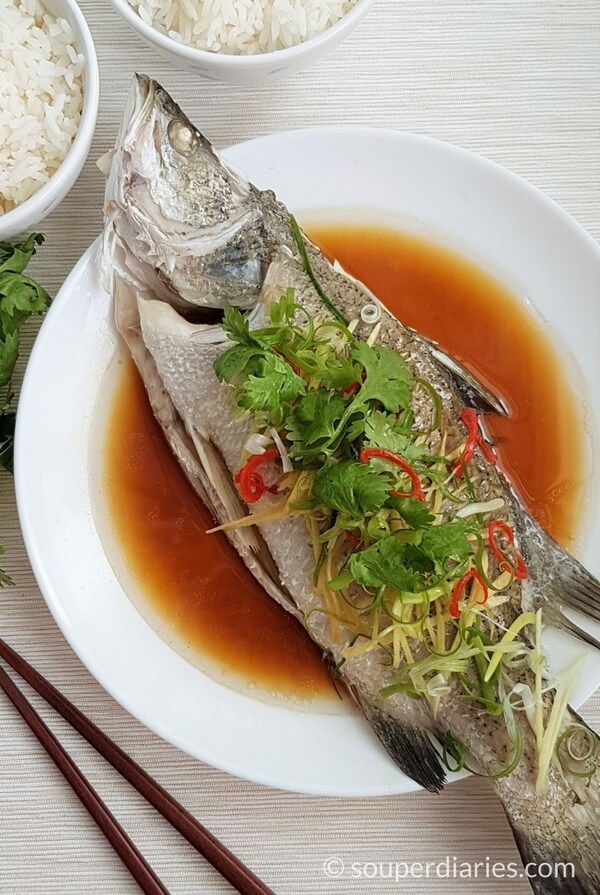
The Art of Steaming
Steaming is a cooking method that has been perfected over centuries in Chinese cuisine. It’s a gentle way to cook food, preserving its natural flavors, nutrients, and textures. For fish, steaming ensures that the flesh remains tender and juicy, without the need for excessive oil or complex sauces.
Choosing the Best Fish for Chinese Steamed Fish
When it comes to making Chinese Steamed Fish, the best option is a (recently) live fish. The next best choice is a fresh whole fish. While you can use fish filets, I highly recommend trying this dish with a whole fish if you can.
Where to Buy Whole Fish
If you decide to use a whole fish, you can usually find it at a Chinatown market or a large Chinese grocery store. When you purchase the fish, have it gutted and scaled at the counter to save yourself some work. Alternatively, you can also find fresh whole fish at a large grocery store with a fish counter. Look for fish with clear eyes and metallic scales, and avoid any that have a fishy or stinky smell, as these are signs of less fresh fish.

Selecting the Right Size
It’s important to choose a small fish, which will cook faster and taste juicier. Also, ensure that your steamer (or whatever cookware you plan to use) can hold the fish. Try to select a fish that is around 1 lb (500 g). Avoid fish that are heavier than 1.5 lb (700 g). Since this dish uses minimal seasoning and cooking, larger fish with tougher, thicker flesh may result in a flakier, tougher texture.
Recommended Fish Types
In my recipe, I used branzino, which is quite popular in the US and relatively easy to find. Other white fish such as flounder and tilapia work well too.
Using Fish Filets
If you prefer to use fish filets, you have a wider range of varieties to choose from. For example, snapper and cod are both excellent choices.
Choosing the right fish is crucial for making the perfect Chinese Steamed Fish. Whether you opt for a whole fish or a filet, ensuring freshness and the right size will help you achieve the best results.
Preparing the Fish
Preparation is straightforward but requires attention to detail. The fish is usually scaled, gutted, and cleaned thoroughly. It’s then scored on both sides to allow the flavors to penetrate the flesh during steaming. Some recipes call for marinating the fish briefly with salt, ginger, and a splash of rice wine to enhance its flavor.
Ingredients
- 1 small head-on sea bass (about 1.1 lb / 500 g), scaled, gutted (or tilapia, flounder, or other white fish)
- 1 1/2 thumb-sized pieces of ginger, 1 thumb sliced, 1/2 thumb julienned
- 3 green onions, sliced into 2.5” (6 cm) long pieceshttps:
- 2 tablespoons Shaoxing wine
- 1 1/2 tablespoons peanut oil (or vegetable oil)
- 2 dried Chinese chili peppers
- 1/8 teaspoon ground Sichuan peppercorn (Optional but highly recommended)
- 2 tablespoons seasoned soy sauce for seafood (or 2 tablespoons regular soy sauce + 1 teaspoon sugar + 1/2 teaspoon chicken bouillon, gently heated in the microwave for easy mixing)
Instructions
- Before cooking, ensure the fish is fully scaled. If needed, descale using kitchen shears. Wash the fish thoroughly with cold tap water and drain. Dry with paper towels. Score the fish 3 to 4 times, 1” (2.5 cm) apart.
- Place a quarter of the green onions on a plate large enough to hold the fish. This prevents sticking. Stuff ginger slices and a quarter of the green onions into the cavity of the fish. Pour Shaoxing wine over the fish. Lightly season with salt. Cover with another quarter of the green onions. Marinate for 10 minutes at room temperature or refrigerate for up to half a day.
- In a large, deep skillet (or steamer or wok), add 1” (2.5 cm) of water and place a steaming rack in the middle. Place the plate of fish over the rack. Cover and bring water to a boil over high heat. Cook, covered, for 5 to 8 minutes, until the flesh easily pulls from the bone with a fork. Turn off the heat.
- Carefully transfer the plate of fish to the kitchen counter. Remove and discard the ginger and green onion from the top of the fish. Spread the remaining julienned ginger and green onions on top of the fish and set aside. Ensure seasoned soy sauce is ready beside the fish.
- In a small skillet or saucepan, heat oil over medium-high heat. Add broken chili peppers and ground Sichuan peppercorns to the oil. Stir until fragrant and peppers are sizzling about 30 seconds. Drizzle the hot oil over the fish. Immediately pour seasoned soy sauce onto the fish.
- Serve immediately. Dip fish meat into the sauce from the plate as you eat.
Notes
- Ensure your plate and skillet (or wok) are large enough to hold the fish before cooking.
- If you don’t have a steaming rack, use wooden chopsticks placed 4 inches apart to hold the plate.
- Cooking time may vary depending on fish size and type.
- For best flavor, pour seasoned soy sauce immediately after hot oil.
The Steaming Process
Steaming the fish is where the magic happens. The fish is typically placed on a heatproof plate, often atop a bed of ginger and scallions. This not only adds flavor but also ensures that the fish cooks evenly. The plate is then placed in a steamer over boiling water. The steam gently cooks the fish, infusing it with the aromatic flavors of ginger and scallions.
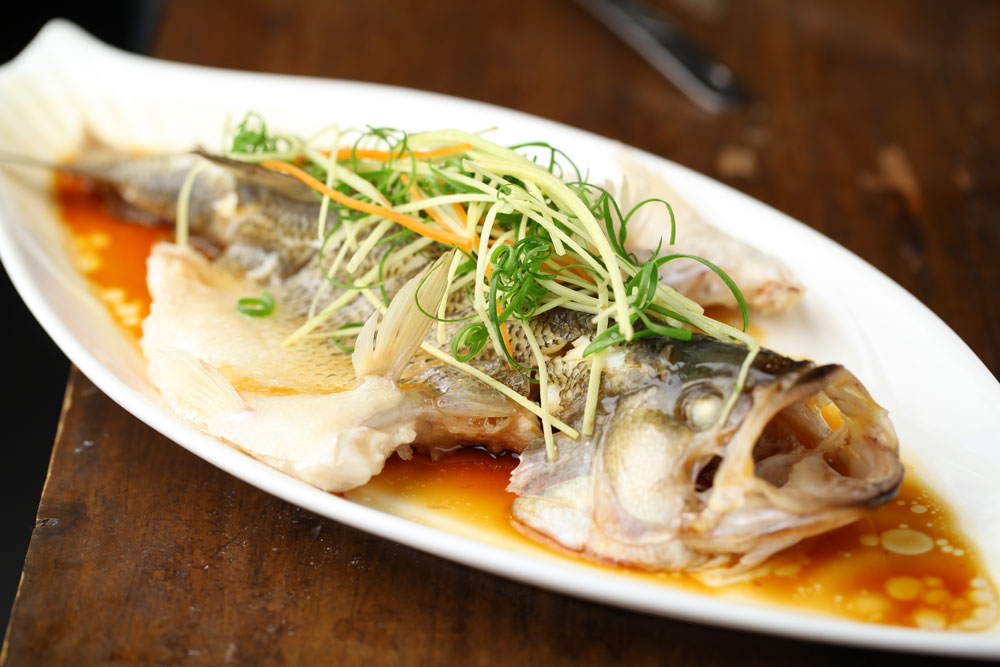
The Finishing Touches
Once the fish is perfectly steamed, it’s time to add the finishing touches. This usually involves a simple but flavorful sauce made from soy sauce, sugar, and sometimes a touch of sesame oil. The hot oil is often poured over the fish just before serving, creating a sizzle that releases the aromas of the ginger and scallions.
Garnishing
Garnishing is an important step that should not be overlooked. Freshly chopped scallions, cilantro, and julienned ginger are often used to garnish the fish. These not only add a burst of color but also enhance the overall flavor and aroma of the dish.
Serving and Enjoying
Chinese Steamed Fish is best served immediately after it’s cooked, while it’s still hot and the flesh is tender. It’s typically enjoyed with a bowl of steamed rice and a variety of other Chinese dishes, creating a balanced and satisfying meal.
A Celebration Dish
In Chinese culture, steamed fish is more than just a delicious meal; it’s a symbol of prosperity and abundance. It’s often served during special occasions such as Chinese New Year, weddings, and family reunions. The whole fish represents unity and completeness, making it a meaningful dish to share with loved ones.
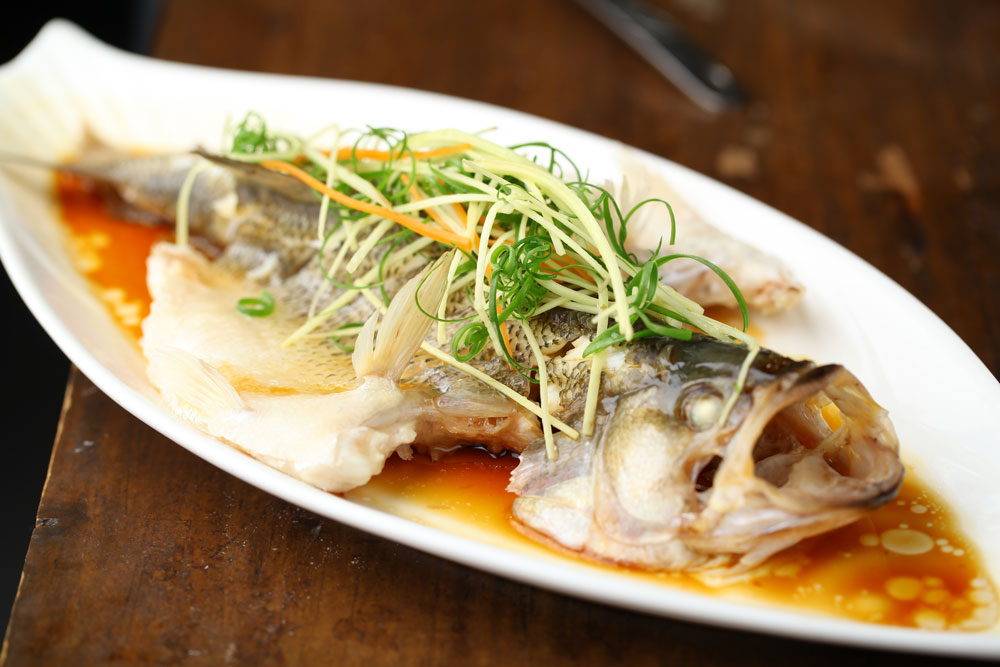
Can I use fish filet instead of whole fish
Using Fish Filets for Chinese Steamed Fish
Yes, you can! Although I always prefer to steam a whole fish, you can use fish filets and still achieve a great result.
Adjusting the Method
Instead of stuffing the fish with aromatics, simply place the aromatics on top and underneath the fish filet. This ensures that the flavors are evenly distributed.
Cooking Time
Keep in mind that a fish filet might take longer to cook than a whole fish because the flesh is a bit thicker. Monitor the cooking process to ensure the fish is perfectly steamed.
Recommended Fish Types
In this recipe, I used a branzino filet. However, other white fish such as flounder, tilapia, snapper, and cod also work very well.
Using fish filets is a convenient and effective alternative to steaming a whole fish, allowing you to enjoy this delicious dish with a variety of fish options.
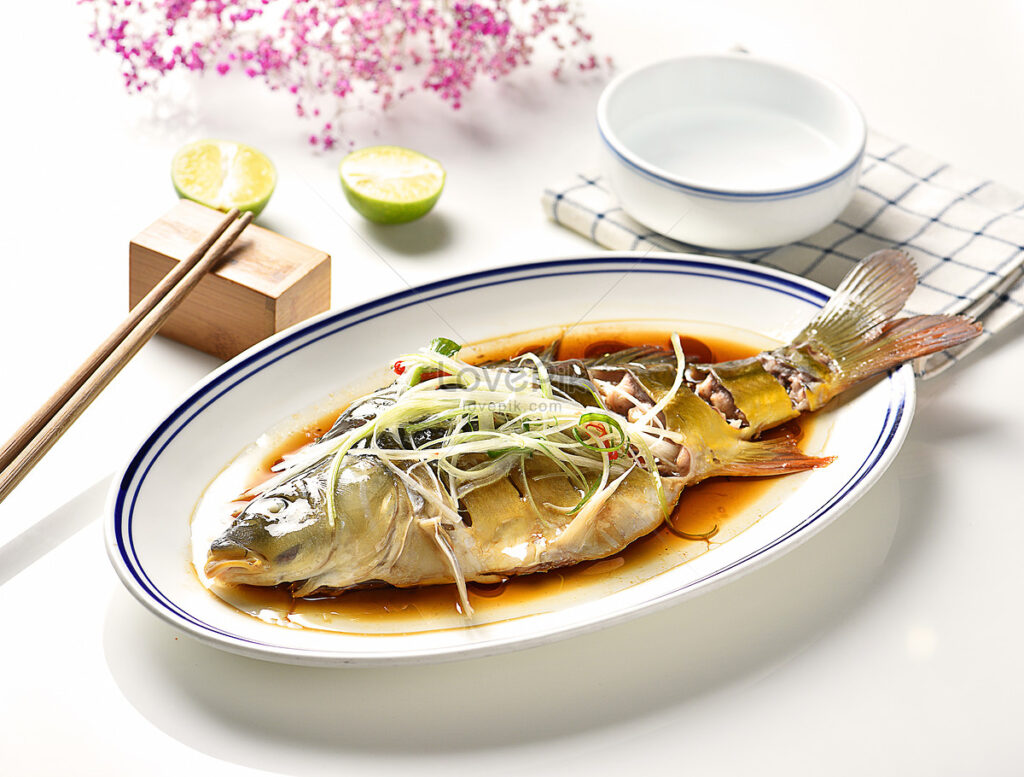
Health Benefits
One of the reasons Chinese Steamed Fish is so popular is because of its health benefits. Steaming is a cooking method that preserves the nutrients in food, making it a healthier option compared to frying or grilling. Fish is also an excellent source of lean protein, omega-3 fatty acids, vitamins, and minerals, which are essential for maintaining good health.
Low in Calories
Because the dish is steamed and not fried, it’s relatively low in calories. The light seasoning means there’s no need for heavy sauces or additional fats, making it a great choice for those watching their calorie intake.
Rich in Nutrients
Fish is packed with essential nutrients like omega-3 fatty acids, which are known for their heart health benefits. It also provides a good amount of vitamins D and B2 (riboflavin), as well as minerals like calcium, phosphorus, iron, zinc, iodine, magnesium, and potassium.

Nutrition Chart for Chinese Steamed Fish
Servings: 4
| Nutrient | Amount Per Serving |
|---|---|
| Calories | 180 |
| Total Fat | 9g |
| – Saturated Fat | 1.5g |
| Cholesterol | 55mg |
| Sodium | 600mg |
| Total Carbohydrates | 3g |
| – Dietary Fiber | 0g |
| – Sugars | 1g |
| Protein | 22g |
Percent Daily Values are based on a 2000-calorie diet.
Ingredients:
- Fresh fish fillets (e.g., sea bass, tilapia)
- Ginger
- Soy sauce
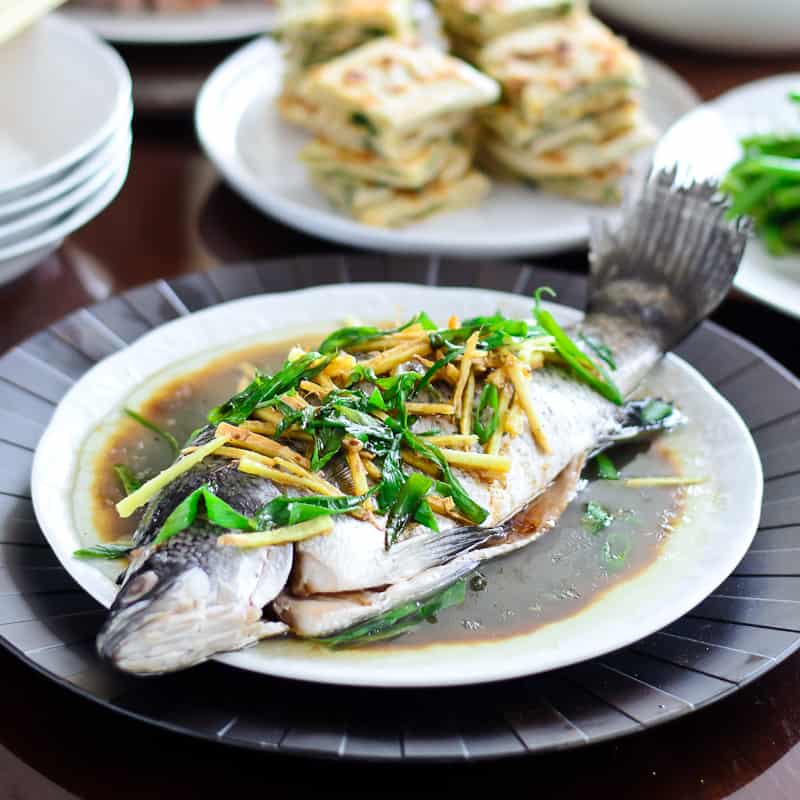
Tips for Perfecting Your Steamed Fish
To achieve the best results when making Chinese Steamed Fish at home, consider the following tips:
Use Fresh Fish
The fresher the fish, the better the taste and texture. If possible, buy the fish the same day you plan to cook it.
Control the Heat
Make sure the water in the steamer is boiling before you place the fish inside. This ensures that the steam is hot enough to cook the fish evenly.
Timing is Everything
The cooking time will vary depending on the size and thickness of the fish. As a general rule, a fish that weighs about one pound should steam for about 8-10 minutes. Overcooking can make the fish dry and tough, so keep an eye on it.
Flavor Infusion
Don’t skimp on the ginger and scallions. They not only add flavor but also help to remove any fishy odor.
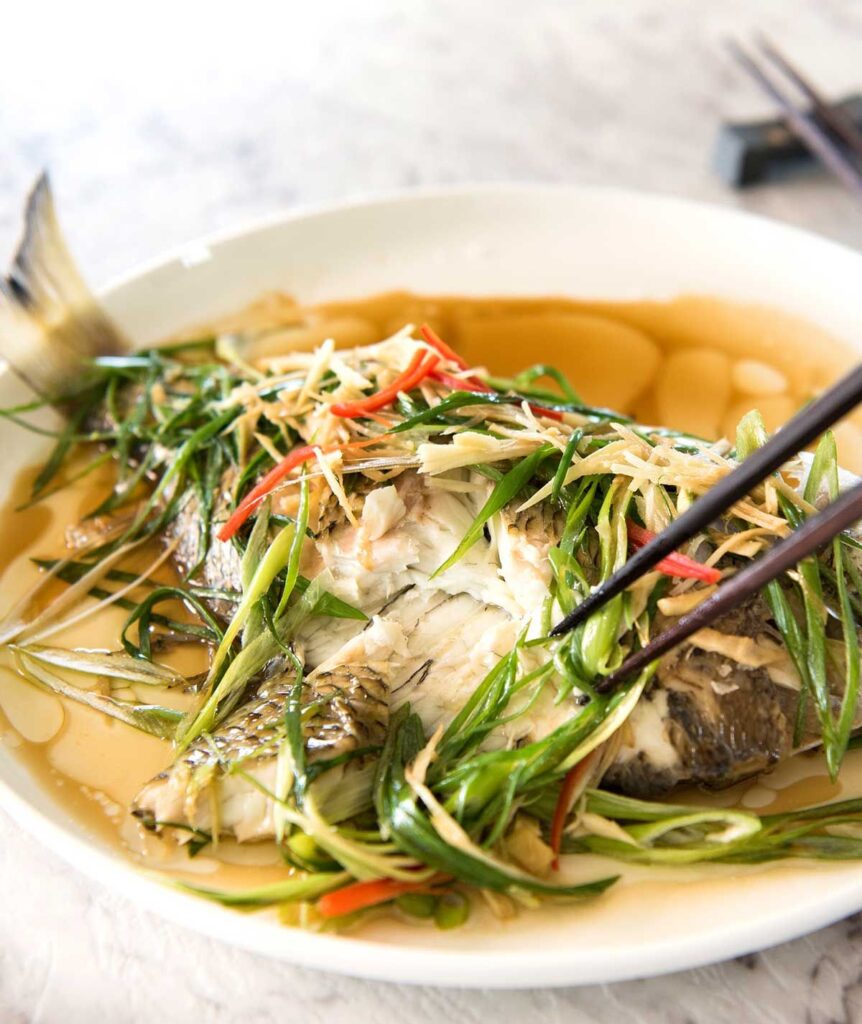
Variations and Adaptations
While the traditional recipe is simple, there are many ways to adapt and vary the dish according to personal preferences and regional tastes.
Cantonese Style
In Cantonese cuisine, it’s common to add fermented black beans and soy sauce to the dish, giving it a richer, more robust flavor. Sometimes, the fish is stuffed with a mixture of ginger, scallions, and other aromatics before steaming.
Sichuan Style
For those who enjoy a bit of heat, the Sichuan version of steamed fish includes the addition of chili peppers and Sichuan peppercorns. This adds a spicy and numbing sensation that’s characteristic of Sichuan cuisine.
Adding Vegetables
Some recipes incorporate vegetables such as mushrooms, bok choy, or tofu into the steaming process. This not only adds variety but also makes the dish more wholesome.
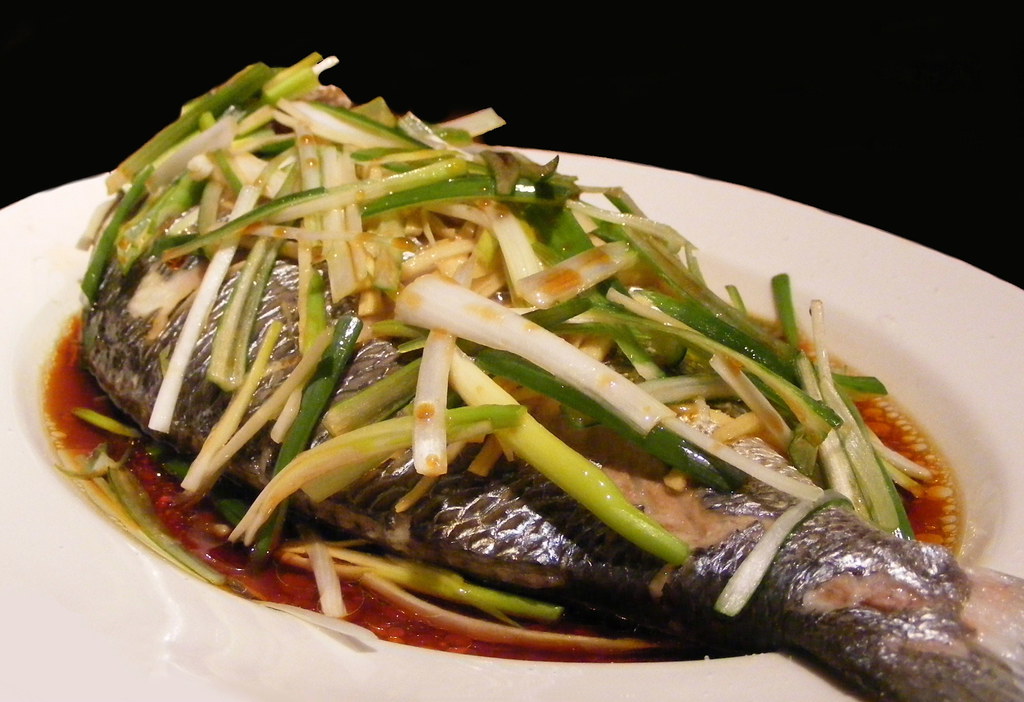
Cooking Tools and Equipment
To make Chinese Steamed Fish, you don’t need any specialized equipment, but having the right tools can make the process easier.
Steamer
A bamboo steamer is traditional and adds a subtle aroma to the dish. However, a metal or electric steamer works just as well. If you don’t have a steamer, you can improvise by placing a heatproof plate on a rack inside a large pot with a lid.
Fish Plate
A shallow, heatproof plate that fits inside your steamer is essential. It should be large enough to hold the whole fish and catch any juices that drip during steaming.
Tongs
Tongs are useful for safely placing and removing the hot plate from the steamer.
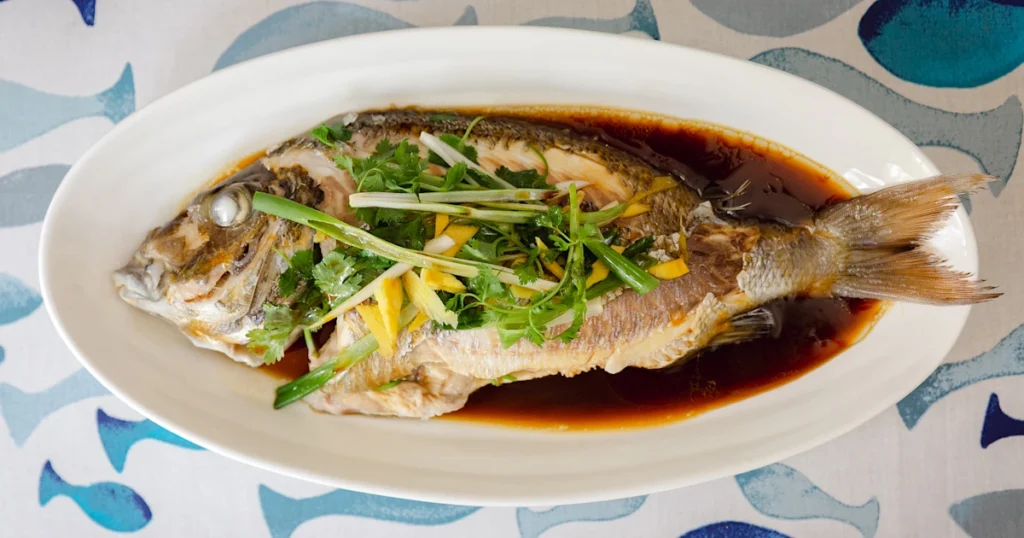
Cultural Significance
Steamed fish holds a special place in Chinese culture. It’s not just about the taste but also about the traditions and meanings associated with the dish.
Symbolism
In Chinese, the word for fish (鱼, yú) sounds like the word for surplus (余, yú), symbolizing abundance and prosperity. Serving a whole fish during celebrations signifies a wish for a surplus of good things in the coming year.
Family Traditions
Preparing and eating steamed fish is often a family affair. It brings people together, with each person contributing to the preparation and sharing of the meal.
Conclusion
Chinese Steamed Fish (清蒸鱼) is a dish that exemplifies the essence of Chinese culinary tradition. Its simplicity allows the natural flavors of the fish to shine, while the gentle steaming process preserves its nutrients and texture. Whether you’re cooking it for a special occasion or a regular family dinner, this dish is sure to impress with its elegance and delicious taste.
Final Thoughts
If you’ve never tried making Chinese Steamed Fish at home, give it a try. It’s a rewarding experience that brings a touch of Chinese culture and a taste of its culinary heritage to your table. Enjoy the process, savor the flavors, and appreciate the tradition that makes this dish so special.